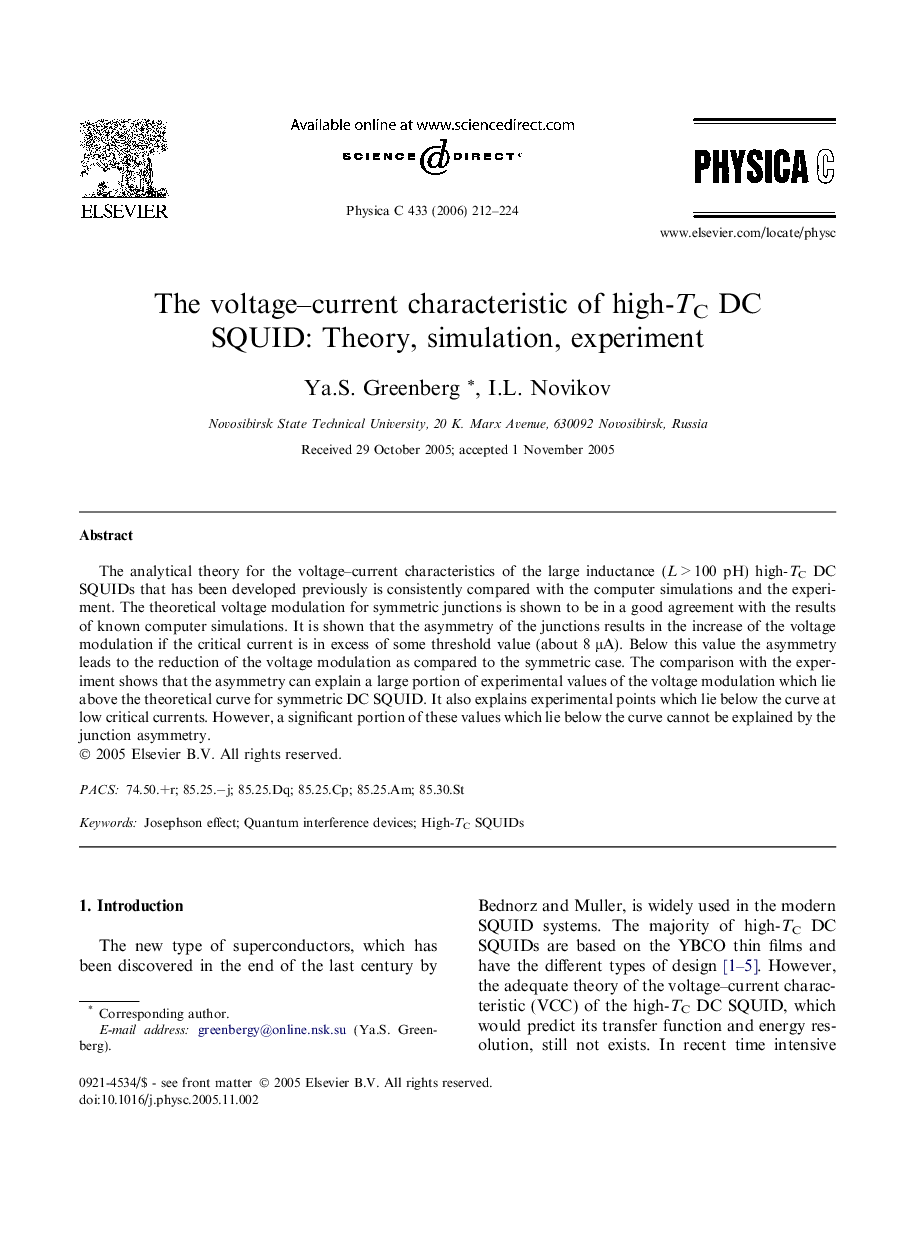| Article ID | Journal | Published Year | Pages | File Type |
|---|---|---|---|---|
| 1820763 | Physica C: Superconductivity and its Applications | 2006 | 13 Pages |
Abstract
The analytical theory for the voltage-current characteristics of the large inductance (L > 100 pH) high-TC DC SQUIDs that has been developed previously is consistently compared with the computer simulations and the experiment. The theoretical voltage modulation for symmetric junctions is shown to be in a good agreement with the results of known computer simulations. It is shown that the asymmetry of the junctions results in the increase of the voltage modulation if the critical current is in excess of some threshold value (about 8 μA). Below this value the asymmetry leads to the reduction of the voltage modulation as compared to the symmetric case. The comparison with the experiment shows that the asymmetry can explain a large portion of experimental values of the voltage modulation which lie above the theoretical curve for symmetric DC SQUID. It also explains experimental points which lie below the curve at low critical currents. However, a significant portion of these values which lie below the curve cannot be explained by the junction asymmetry.
Related Topics
Physical Sciences and Engineering
Physics and Astronomy
Condensed Matter Physics
Authors
Ya.S. Greenberg, I.L. Novikov,
